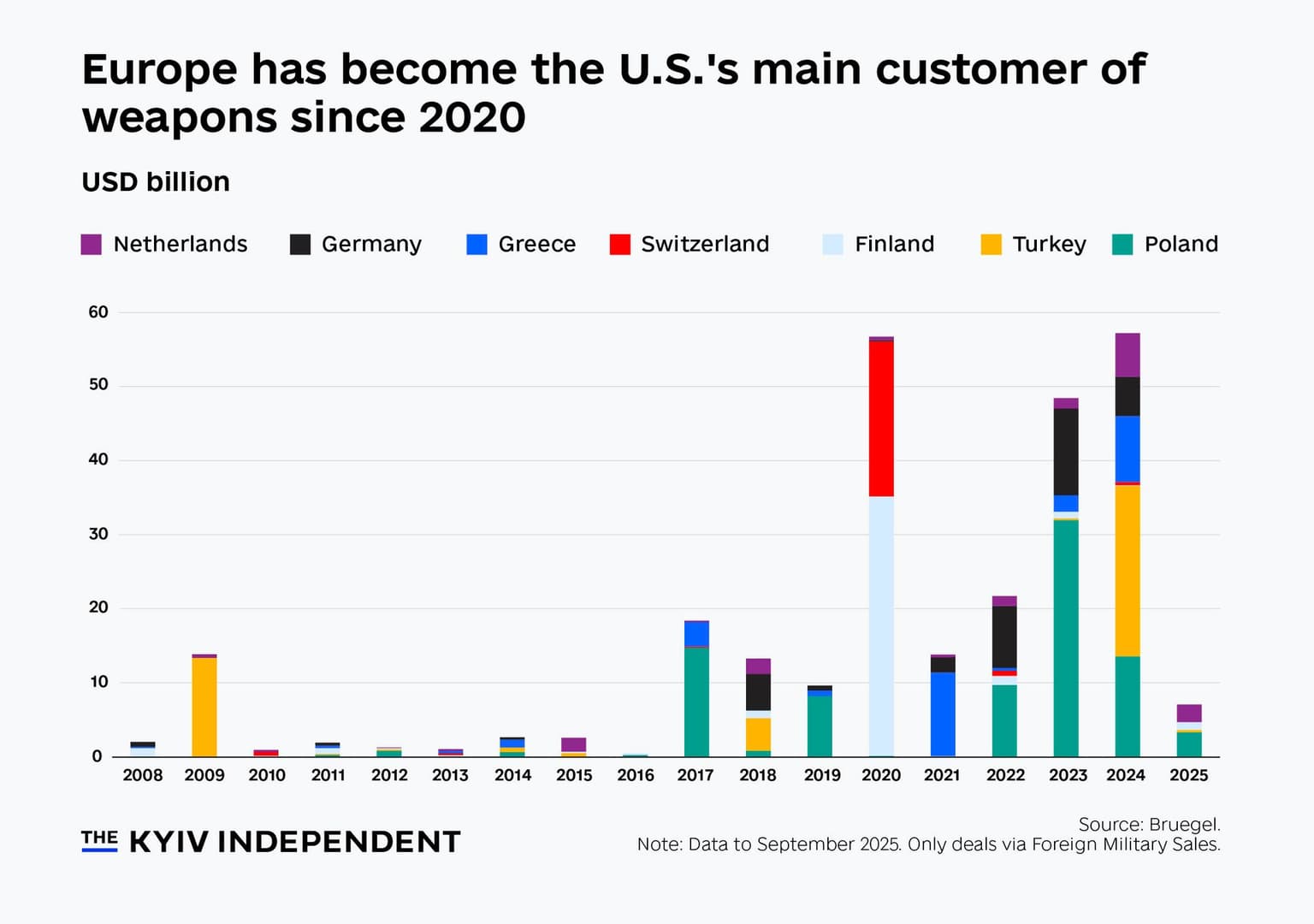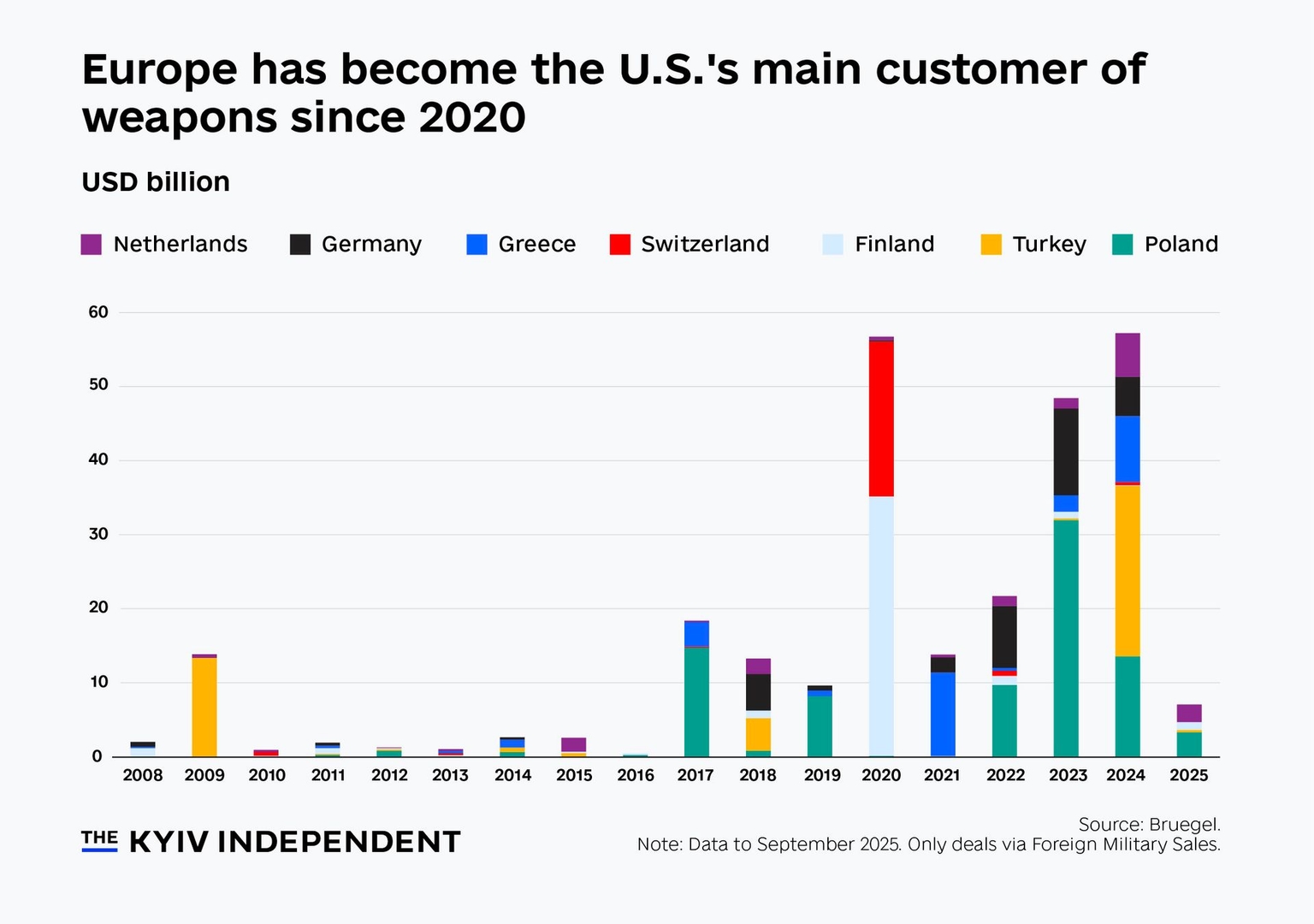Chart of the week: Europe doubles down on US weapons as Russian threat grows

Editor's note: An earlier version of this article stated that there was no public systemic accounting of U.S. weapons sales. It has been updated to state that data on weapons sales is limited.
The United States is the biggest exporter of military equipment in the world. But who’s buying?
Data on weapons sales is often scarce, with a limited level of detail. A new dataset from the Brussels-based think tank Bruegel released last week helps to fill that gap, revealing a sharp increase in European purchases of American military technology since 2020.
"European purchases reached a record high of $76 billion in 2024, four times the European average since 2008," Juan Mejino-López, analyst at Bruegel, told the Kyiv Independent.
After a decade of low purchases, Europe has become the main U.S. customer over the last five years. Grappling with shifting geopolitical realities, the continent is sharply increasing purchases as it arms Ukraine, rearms itself, and aspires to build a more self-reliant defense industry.
"Part of the story is that European countries need to provide Ukraine with more U.S. weapons. But another part of the story is that President Trump now wants European governments to pay for all of (the weapons for Ukraine)," he said.
The data shows weapons transfers via the "Foreign Military Sales" (FMS) program, in which foreign governments purchase military equipment through agreements with the U.S. government. When that happens, the U.S. administration gives Congress formal public notice of the sale, which is what Bruegel tracks.
FMS sales are the main way that the U.S. transfers weapons abroad, but it means that other types of sales or donations, such as the military assistance provided under the "Ukraine Security Assistance Initiative," are not included in the dataset.
President Trump has ceased new military donations to Ukraine, explaining part of the increase in FMS sales.
The majority of recent European spending has been on U.S. weapons — from 2022 to 2024, 51% of European NATO countries' military spending was on FMS from the U.S., up from 28% from 2019 to 2021, according to the dataset.
Poland alone accounts for 30% of European demand from 2022 to 2024, with purchases amounting to $55 billion, including aircraft, air defense systems, and battle tanks.
"Time will tell whether it's a wise investment," Mejino-López said of Poland's purchase of U.S. weapons.
Some U.S. weapons are unrivaled by European producers. President Volodymyr Zelensky noted at a press conference in Brussels on Oct. 23 that there were few alternatives to American Patriot systems, which intercept ballistic missiles and are frequently used in Russian attacks on Ukraine's energy infrastructure.


However, individual European countries and the EU are seeking to improve their own production of weapons to reduce reliance on the U.S., which under Trump, has made its commitment to protecting Europe less clear.
"There are lock-in effects when you buy U.S. equipment — you have to keep buying missiles, software, radars and other IT equipment for decades," Mejino-López said.
An important caveat to note is that the dataset only reflects if a sale was planned — not whether it was concluded. For example, Swiss voters and politicians have pushed to cancel a 2020 purchase of F-35 jets totaling 6 billion francs ($7.5 billion) after disputes over their cost and Trump's 39% tariffs on the country, the highest among developed nations.
The dataset tracks all U.S. sales under the FMS program. You can check it out here.












